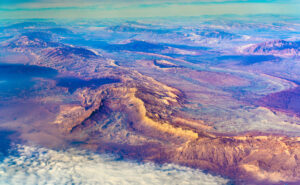It is easy for us to believe that 2020 was one of the worst years in human history. We lived through a devastating pandemic, the deaths of millions, and a major economic recession. However, there have been many worse years. The Volcanic Winter of 536AD was one of them.
Whether a stroke of bad luck or the scourge of God, 536AD seemed an apocalyptic time in which to live. Several sources from late antiquity speak of a drastic change in climate that caused immense hardship.
The ancient Roman scholar Cassiodorus reported “a winter without storms, spring without mildness, and summer without heat.” Procopius wrote that “the sun gave forth its light without brightness…like the sun in eclipse.” The 12th-century scholar Michael the Syrian said that “the sun shone feebly for a year and a half.” Others described lower temperatures, harvest failure, famine, and disease from Europe to the Middle East.
Climate historians believe that this major cooling that began in 536AD occurred because of a massive volcanic eruption. This would account for the descriptions of dark skies and the subsequent cooling of the Earth for about 18 months. Temperatures fell by 2.5°C. It even snowed in China during the summer. The atmosphere was highly toxic with hydrogen sulfide, neon, carbon monoxide, sulfur dioxide, and other dangerous elements.
This took on a dusty veil that dulled the sun’s vibrancy. It took over a century for the climate to return to normal. This period is called the Late Antiquity Little Ice Age.

A mosaic of Emperor Justinian. Photo: Michal Saymanski/Shutterstock
Which volcano was to blame?
Scientists have not yet determined which volcano or volcanoes erupted. There are several possible culprits: a volcano in Iceland, Tierra Blanca Joven in El Salvador, Krakatoa in Indonesia, or Rabaul in Papua New Guinea. However, Tierra Blanca Joven has recently been ruled out. Tree-ring analysis has shown that it erupted in 431AD, a century before the volcanic winter. However, an analysis of ice samples found evidence of a volcanic eruption in Iceland dating to approximately 534AD. Other tests of tree rings found two other eruptions in 540 and 547.
The volcanic winter triggered social, political, and economic upheavals. Frost-killed crops led to famine. People as diverse as the Saracens, Mongolians, Lombards, and Slavs fled their drought-stricken homelands. There was barely any bread. Starvation killed thousands and allowed pestilence to fester.

Dried-up land led to famine. Photo: Lal Nallath/Shutterstock
Bubonic plague struck a few years later, evolving into the infamous Plague of Justinian. It was one of the world’s first major pandemics and killed over 100 million people, including almost half the population of the Eastern Roman Empire. Some scholars speculate that this plague was somewhat responsible for the Empire’s collapse. The volcanic winter has been linked to the demise of other civilizations, including the Sassanid, Avars, and even the Moche in Peru.
Despite the horrors of 536AD, life returned to normal by the 600s. There was a decent economic recovery. European kingdoms started to smelt silver, which eventually replaced gold as the standard currency. This encouraged the emergence of a middle class. Farming and agriculture revived.
It’s only human to complain about the times we live in. All the same, we should be thankful not to have lived through 536AD.






